How to Use Google Sheets Edit History to Track Changes

Sorry, there were no results found for “”
Sorry, there were no results found for “”
Sorry, there were no results found for “”

“Why are these numbers different from what I entered yesterday?”
If you’ve ever asked that while staring at a spreadsheet, it’s time to learn a game-changing trick.
Google Sheets’ edit history shows who changed what and when—no more finger-pointing or wild goose chases.
The best part? You don’t need to be a Sheets pro to use it.
Whether you’re tracking budgets, timelines, or team data, knowing how to view changes and restore versions keeps your spreadsheets drama-free. Because the only surprises you want are extra budget—not missing numbers.
If you want a superior Google Sheets alternative for spreadsheet version control, stick around to learn more about ClickUp’s Table View. The best part? It integrates with Google Drive! 🤩
Think of Google Sheets’ version history as your safety net when working on spreadsheets. Like a digital time machine, it keeps track of who changed what and when in an earlier version of your spreadsheet.
The feature goes beyond basic document version control. Every edit, from a tiny cell update to a major formula change, gets recorded with the editor’s name and timestamp.
The system supports real-time collaboration by showing different editors in distinct colors.
💡 Pro Tip: When reviewing changes, check the ‘Show changes’ box at the bottom of the version history sidebar. This highlights all edits in their editor’s assigned color, making it much easier to spot what changed between versions. You can then quickly jump between versions using the navigation arrows to find a previous version you want to restore.
The edit history feature in Google Sheets helps you stay on top of every modification made to your files. Here’s why the edit history in Google matters and how it makes your work easier:
🧠 Fun Fact: You can talk to your spreadsheet! 🎙️Use Google Sheets’ voice typing to enter data hands-free. Just enable voice typing in Google Docs, then copy your data over. One of the coolest Google Sheets shortcuts, isn’t it?
Tracking changes is vital for virtual collaboration in spreadsheets. When comparing Google Sheets vs. Excel, one key advantage is Google’s automatic, built-in version tracking. There is no need for extra add-ons or complex settings—the feature works right out of the box.
Here’s your step-by-step guide to accessing and using edit history in Google Sheets:
The edit history window for each cell shows who made each change and when it happened, perfect for tracking down specific updates.
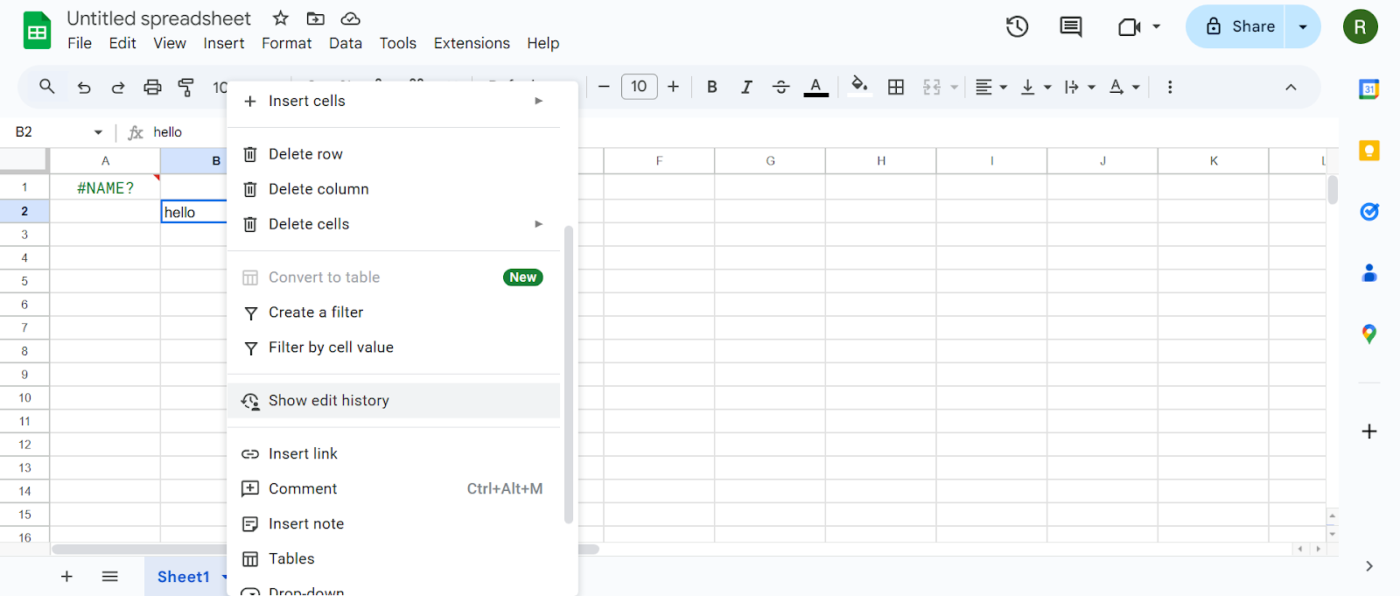
Here’s how you can do it yourself:
You can view changes to your whole spreadsheet.
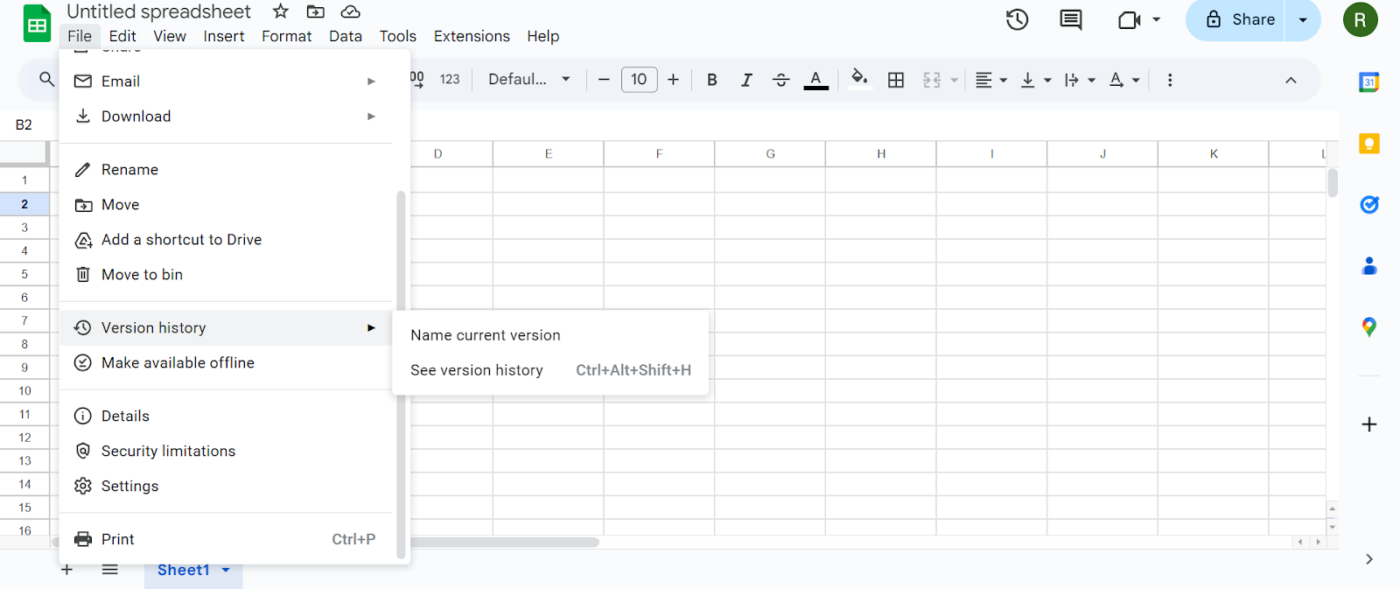
Here’s how:
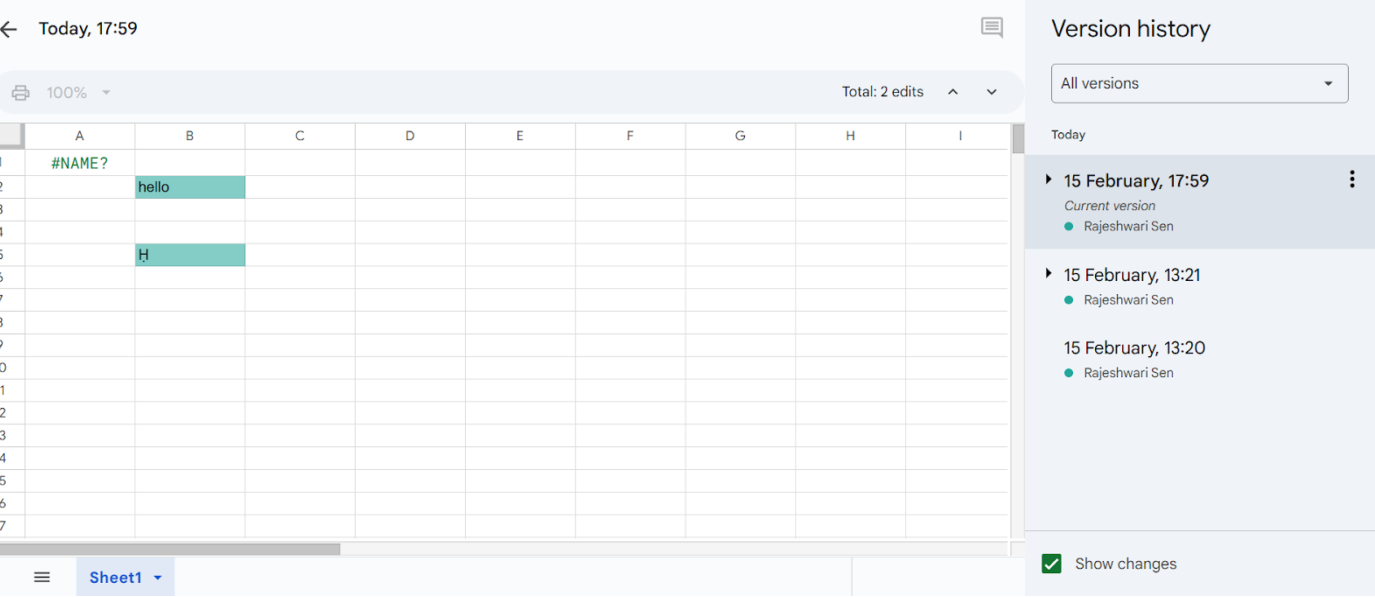
You can quickly access Google Sheets edit history by pressing Ctrl + Alt + Shift + H. This opens a side pane displaying all changes in your spreadsheet.
When you view Google Sheets version history, you’ll see who made updates along with the date and time. Click on any timestamp to preview the sheet as it was then.
👀 Did You Know? Only users with edit permissions can see the version history in Google Sheets, keeping your data secure.
Found an error? You can easily restore your Sheet to a previous version that had the correct data.
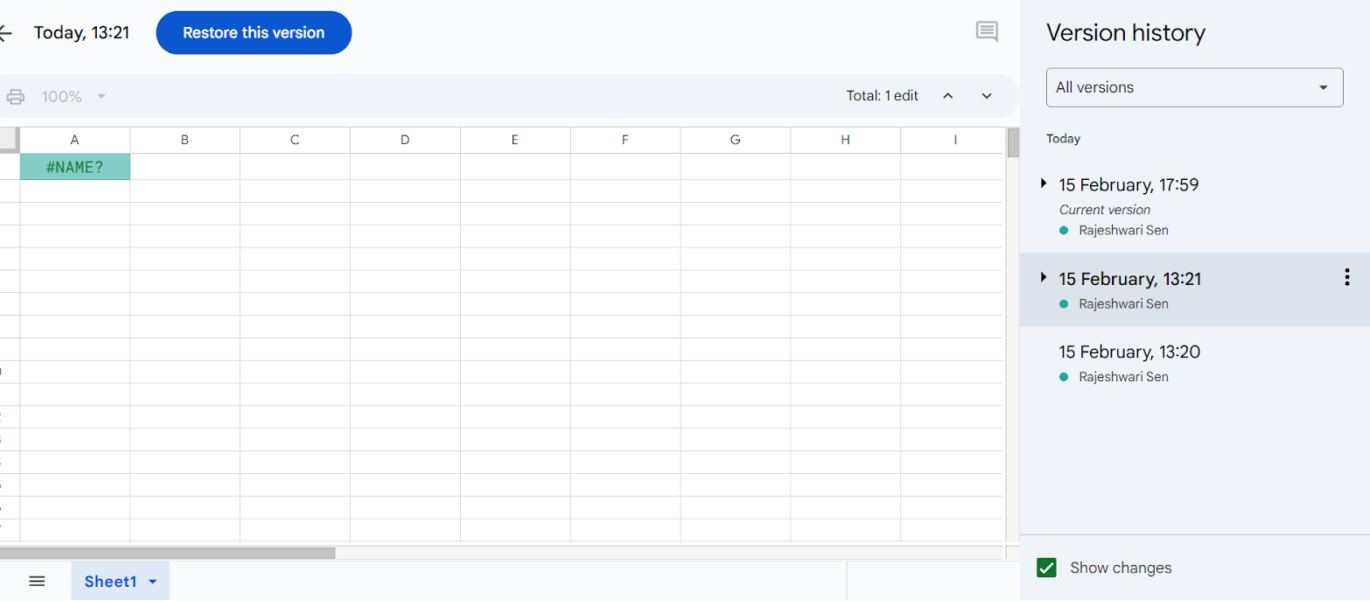
Here’s how to roll back changes:
Mark significant milestones or changes for easy reference later using named versions.
(By default, the versions are named as a combination of the date and time when they were last modified.)
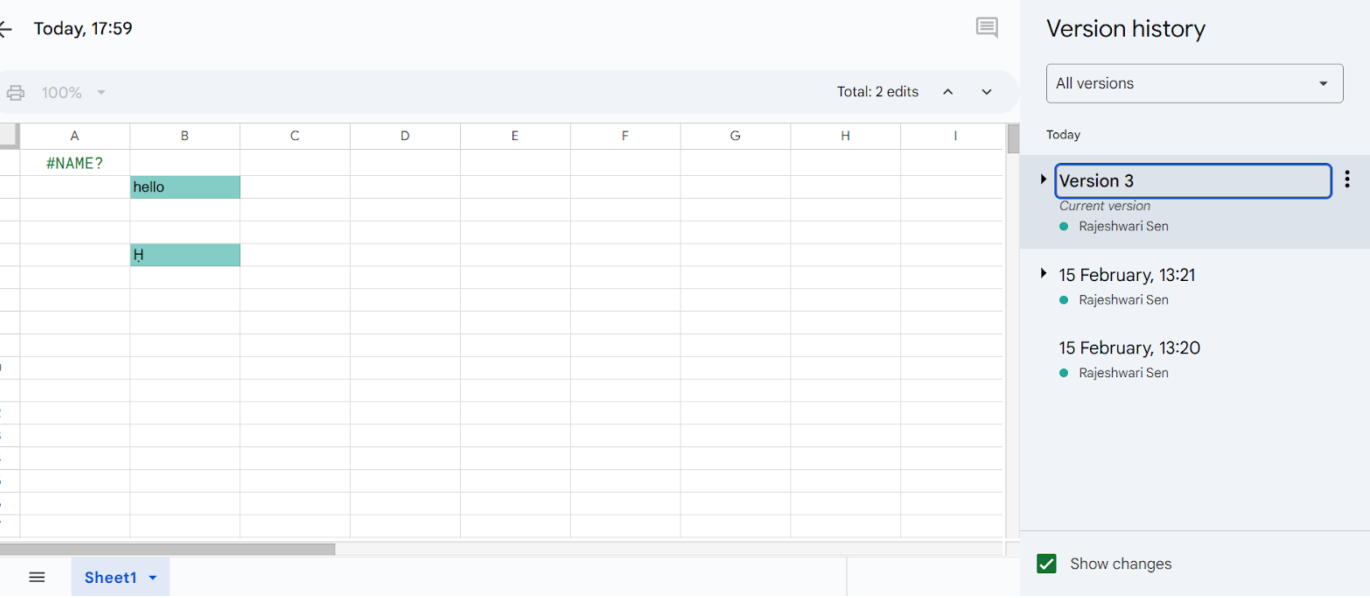
For better organization:
Google Sheets’ Edit History is a powerful tool for tracking changes, restoring previous versions, and collaborating efficiently. Here’s how to make the most of it:
✅ Show edit history for transparency
📁 Save storage space by managing versions
🔎 Compare different versions for accuracy
🧮 Use formulas efficiently
While Google Sheets offers handy features for basic spreadsheet tasks, it comes with many restrictions that can slow down your work. Here are the five key limitations you might run into:
If you’re seeking better ways to track changes and manage document versions, ClickUp offers a smart alternative to Google Sheets. It offers easier ways to handle collaborative editing, table formatting, and access control.
ClickUp is the everything app for work that combines project management, knowledge management, and chat—all powered by AI that helps you work faster and smarter.
Vladimir Janovsky, Innovation Business Excellence Director at AstraZeneca CE, a ClickUp user, says:
Although we are still in the early stages of integrating ClickUp into cross-functional team projects, its utility has been particularly evident in multi-country team settings. The platform’s rich feature set effectively handles the complexity and scope of tasks that span multiple countries, streamlining both communication and coordination.
Here’s why choosing ClickUp for your spreadsheets and databases is a better idea:
ClickUp’s native integration with Google Drive means you keep the familiar Google tools while gaining more powerful project management features.

For quick collaboration, paste a Google Drive link directly into ClickUp and select Mention for a condensed preview. The first time you do this, you’ll be prompted to connect your account.
This integration streamlines workflows, making it easier to access and manage documents within your ClickUp workspace.
Integrate Google Drive with ClickUp to seamlessly attach Docs, Sheets, and Slides to tasks and comments. You can also easily open a Google Drive tab and create new Docs, Sheets, or Slides without leaving ClickUp.
Tired of manually analyzing spreadsheets?
Just paste a link from any Connected App, including a Google Sheet, and let ClickUp Brain, ClickUp’s native AI, do the heavy lifting. You’ll get instant, accurate answers without digging through tabs or switching tools—so you can focus on what matters.
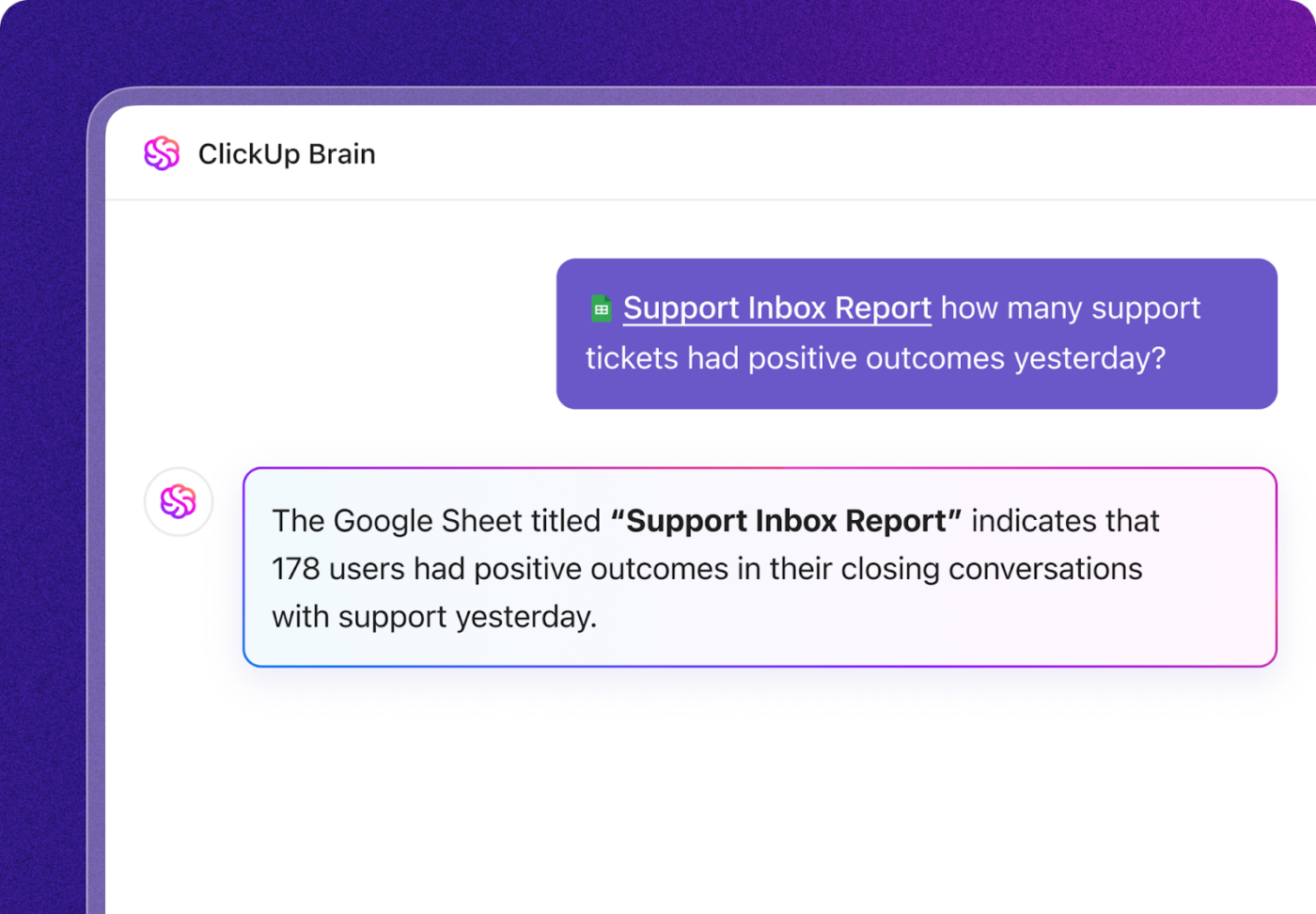
ClickUp’s Table View offers a fresh approach to spreadsheet management, with more flexibility than Google Sheets. Every row maintains the same height, and each field becomes a column, creating a clean layout perfect for scanning large datasets.
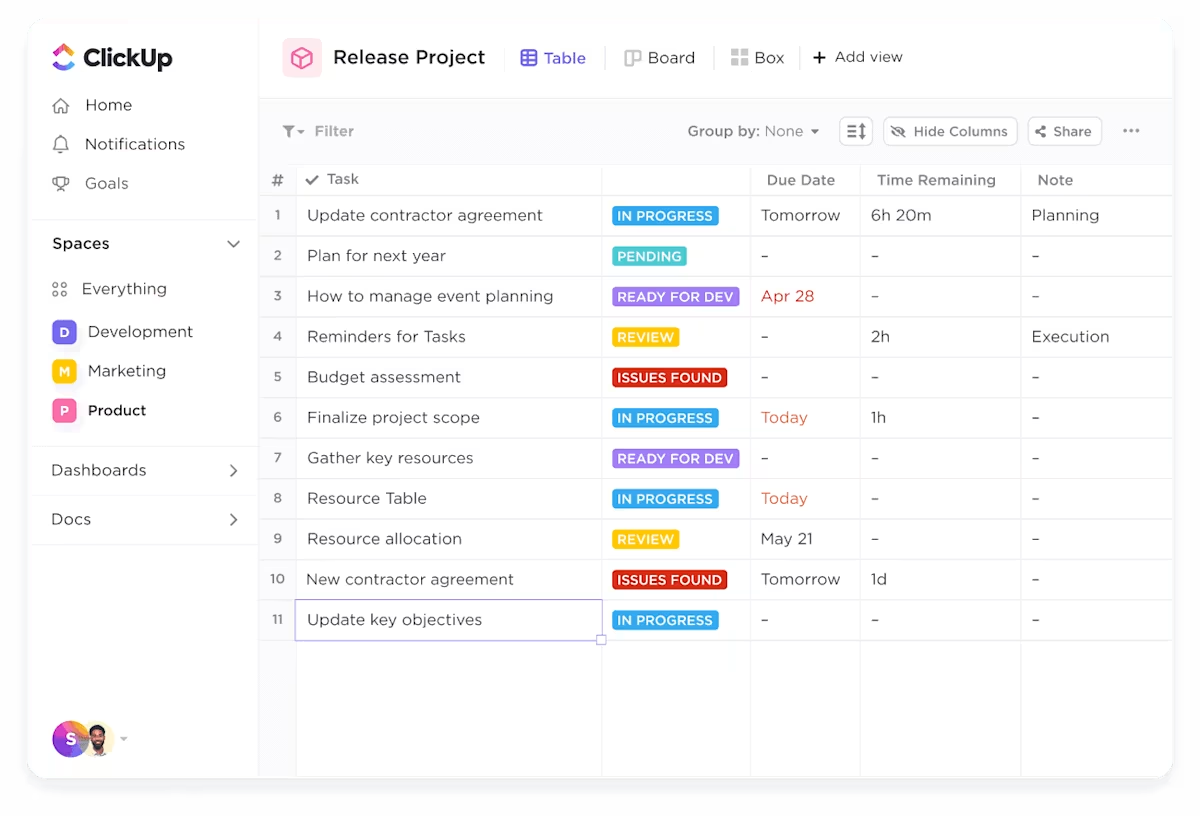
Want to hide those pesky tags that always show up in Google Sheets? In ClickUp’s sidebar, you can show or hide any column. This means no more scrolling through irrelevant data—you see exactly what you need.
The details matter when managing data, and ClickUp’s Table view proves this with features like:
To protect sensitive information, you can set permission levels and share specific views within your workspace or via a link.
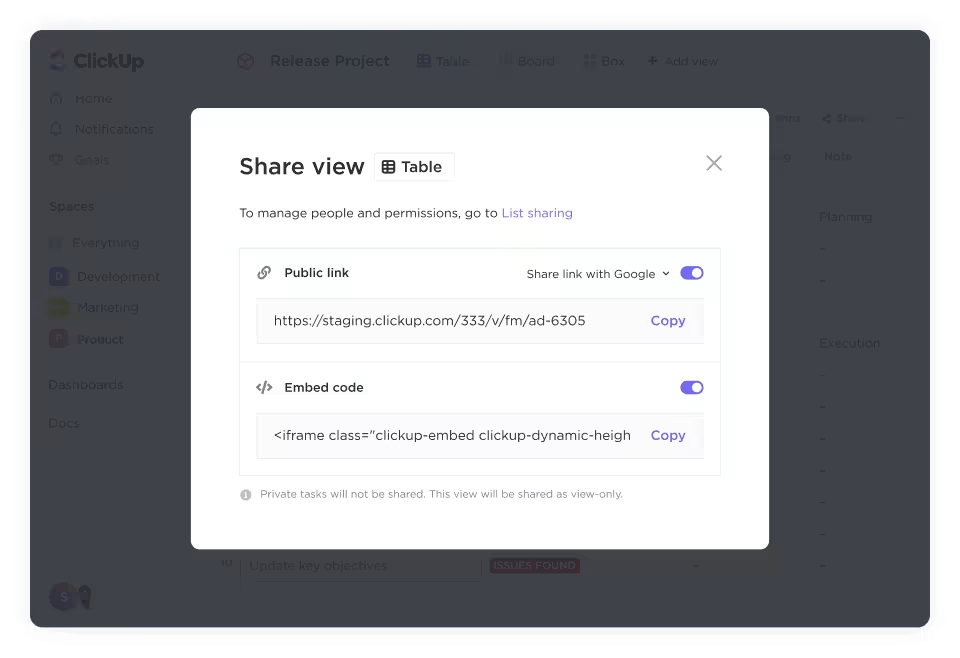
Unlike basic spreadsheet tools, ClickUp’s Table cards turn your data into actionable insights.

Use them to quickly spot what needs attention:
Need more control? Fully customizable table cards let you report on granular data like task completion rates, lead times, and individual productivity, from tracking assigned comments to monitoring workspace activity.
Unlike Google Sheets, which requires opening a separate tab to access edit history, ClickUp brings version history right where you need it. Whether on a Mac or any other device, simply click the clock icon above any ClickUp Task description or ClickUp Doc to view and restore previous versions instantly.

Changes are clearly highlighted, making it easy to track updates, revisions, and contributions from each editor. No more guesswork—see what changed, when, and by whom in a single view with ClickUp’s task description history.
While Google Sheets’ version history helps track changes, you might want more from your collaboration tools. Managing multiple spreadsheets across Google Drive can get messy fast, especially when working with larger teams.
📮ClickUp Insight: Low-performing teams are 4 times more likely to juggle 15+ tools, while high-performing teams maintain efficiency by limiting their toolkit to 9 or fewer platforms. But how about using one platform?
As the everything app for work, ClickUp brings your tasks, projects, docs, wikis, chat, and calls under a single platform, complete with AI-powered workflows.
Ready to work smarter? ClickUp works for every team, makes work visible, and allows you to focus on what matters while AI handles the rest.
ClickUp doesn’t just offer an alternative to spreadsheets—it brings your entire Google Drive ecosystem into one organized workspace:
Ready to upgrade your workflow? Try ClickUp and see how much smoother team collaboration can be when everything’s in one place.
© 2026 ClickUp